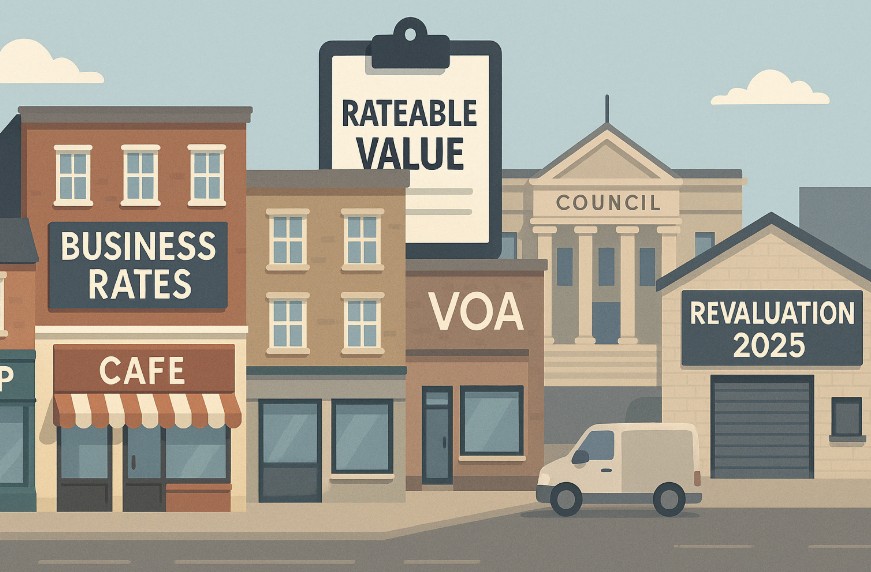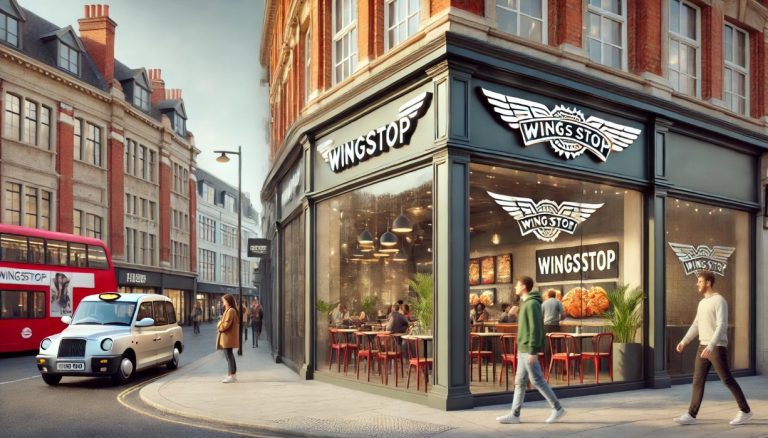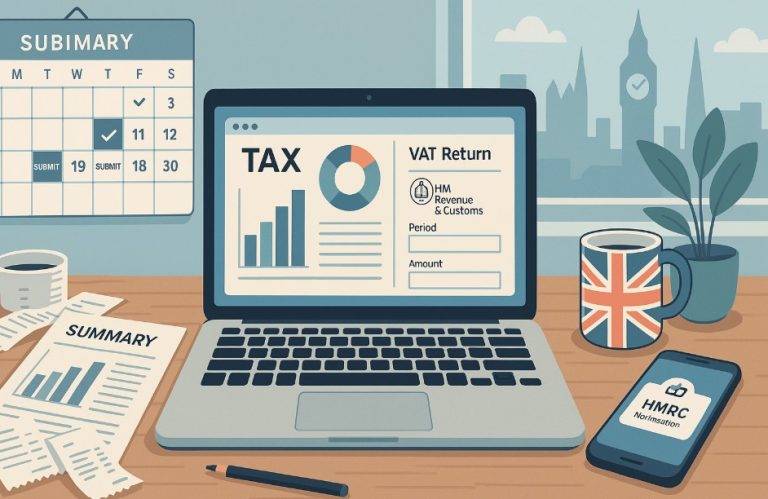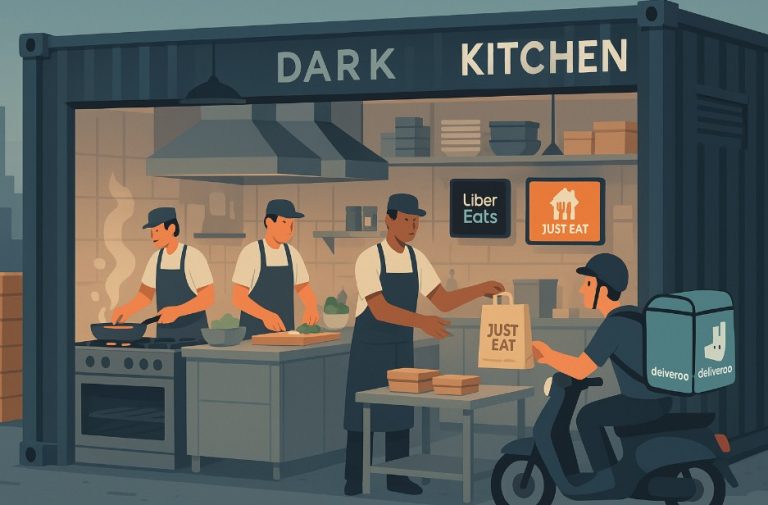How VOA Business Rates Impact Commercial Properties in the UK?
For businesses operating in the United Kingdom, understanding VOA business rates is not just a matter of accounting, it’s a strategic necessity. These non-domestic property taxes, administered by the Valuation Office Agency (VOA), influence decisions ranging from location and expansion to budgeting and cash flow.
For commercial property owners and tenants alike, being informed about the implications of VOA business rates can lead to cost savings, improved financial planning, and better compliance with regulatory expectations.
This comprehensive guide explores how VOA business rates work, how they’re calculated, and how businesses can manage them effectively especially as we approach the upcoming 2025 revaluation.
What Are VOA Business Rates and Why Do They Matter?

Business rates, also known as non-domestic rates, are a form of tax levied on properties that are used for commercial purposes. These include spaces like retail stores, warehouses, restaurants, offices, and industrial units.
The Valuation Office Agency, part of HM Revenue & Customs (HMRC), is responsible for assigning the rateable value to each property, which is used to calculate how much a business must pay.
The significance of these rates goes beyond mere tax obligations. For many small and medium-sized businesses, they represent a substantial part of their operating costs.
For instance, a retail shop on a bustling high street may pay thousands of pounds annually in business rates, impacting profitability and financial planning. On the other hand, smaller businesses in lower-rent areas might benefit from small business rates relief, reducing or eliminating their liability.
In short, understanding VOA business rates is key to maintaining financial control and avoiding unexpected costs that could affect your business’s long-term viability.
How Is the Rateable Value of Commercial Properties Calculated?
The cornerstone of the business rates system is the rateable value of a commercial property. This figure is determined by the VOA and is meant to reflect the annual rent the property could achieve on the open market on a specific date currently 1 April 2023 for the upcoming 2025 revaluation.
The VOA considers several factors when assigning a rateable value:
- Size and layout of the property
- Location and surrounding property values
- Usage type, whether it’s for retail, office space, or industrial activity
- Amenities and services, such as parking or storage facilities
Once the rateable value is determined, it is multiplied by the Uniform Business Rate (UBR) to calculate the business rates bill. The UBR is a multiplier set annually by the UK government and can differ slightly for small businesses and larger organisations.
The resulting bill can be further reduced through available relief schemes, such as small business rates relief or discretionary exemptions granted by local authorities. Businesses can estimate their liability using the business rates calculator provided by the government.
In What Ways Do VOA Business Rates Affect Commercial Property Costs?
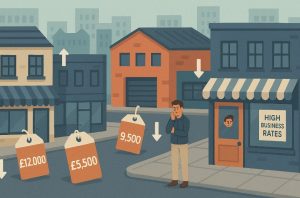
VOA business rates are more than a routine tax they play a major role in shaping how businesses operate within their commercial premises. From budgeting to leasing decisions, their impact is substantial.
One of the most immediate effects is on cash flow. Business rates are payable annually, and in many cases, businesses must pay large sums in instalments. This can create significant financial pressure, particularly during off-peak seasons or periods of lower customer demand.
In regions with high commercial rental values, such as central London or affluent suburban areas, the burden of business rates can rival or even exceed the rent itself. This can discourage new businesses from entering the area or force existing ones to relocate to more affordable premises.
The cost of business rates also affects how properties are utilised. Businesses may choose to:
- Sublet parts of their premises to reduce liability
- Limit expansion to avoid higher rateable value assessments
- Downgrade to smaller or less centrally located spaces
Such decisions may be driven purely by tax-related costs, rather than operational needs, a reality that underscores the importance of understanding and actively managing VOA business rates.
What Is Business Rates Revaluation and How Does It Impact Businesses?
To ensure fairness, the VOA regularly updates the rateable value of all commercial properties through a process known as business rates revaluation. This process helps align property values with current market trends and reflects changes in the rental landscape.
Historically, revaluations took place every five years. However, in a bid to create a more responsive system, the UK government has now shifted to a three-year revaluation cycle. The next revaluation comes into effect on 1 April 2025, using rental data from 1 April 2023 as the baseline.
Revaluations can lead to both increases and decreases in a business’s rates bill. For example:
- Businesses in high-demand areas may see their rateable values (and therefore rates) rise.
- Companies in economically declining regions may benefit from lower valuations.
- Some businesses may qualify for transitional relief to phase in changes gradually.
Understanding how revaluation works can help businesses prepare in advance, challenge unfair assessments, and make informed decisions about their property needs.
What Business Rates Reliefs and Exemptions Are Available in the UK?
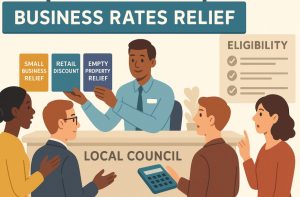
The government recognises that business rates can place a strain on smaller enterprises or those facing hardship, which is why several reliefs and exemptions are available.
Small Business Rates Relief (SBRR)
This is the most common form of support, offering up to 100% relief on properties with a rateable value of £12,000 or less. Properties with a rateable value between £12,001 and £15,000 receive tapered relief.
Retail, Hospitality and Leisure Relief
As part of ongoing recovery efforts post-COVID, eligible businesses in these sectors can claim up to 75% discount on their business rates bill for 2024–2025, capped at £110,000 per business.
Empty Property Relief
If a commercial property becomes vacant, businesses may be exempt from paying business rates for a limited time typically 3 months, or 6 months for industrial properties.
Hardship Relief
Local authorities can offer discretionary hardship relief where a business can demonstrate financial difficulties and how continued trading benefits the local community.
Each relief has specific eligibility criteria, and applications are processed by local councils. It is important for businesses to explore all options available to them, as even temporary relief can ease financial pressure significantly.
How Can Businesses Appeal Their VOA Business Rates?
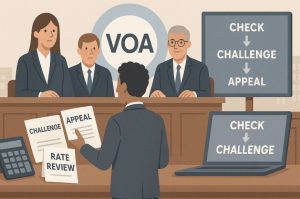
Businesses that believe their rateable value is incorrect or outdated have the right to appeal through the VOA’s Check, Challenge, Appeal (CCA) process. This structured method ensures a transparent review of the assessment.
The CCA Process
- Check: Review and confirm property details listed by the VOA.
- Challenge: Submit a formal challenge, including supporting evidence such as recent rent agreements or changes in property use.
- Appeal: If the challenge is unsuccessful, the case may be escalated to the Valuation Tribunal.
Common reasons for appeal include errors in the property description, incorrect usage classification, and changes in market conditions that affect rental values.
While many businesses choose to handle appeals independently, those with complex property portfolios may benefit from seeking professional advice or representation to increase the likelihood of a favourable outcome.
What Role Do Local Authorities Play in Managing Business Rates?
Although the VOA is responsible for assessing rateable values, it is the local authorities that handle the administration of business rates.
This includes:
- Issuing bills and collecting payments
- Enforcing non-payment and applying penalties
- Managing local relief schemes and exemptions
The Uniform Business Rate (UBR) also called the multiplier is set annually by the central government. In 2024, the standard multiplier is 51.2p, while the small business multiplier is 49.9p. Local authorities apply these rates to the VOA’s assessments to calculate the total amount payable.
Business rates are a major source of funding for councils, supporting services such as waste collection, street lighting, and public safety initiatives. As such, accurate payment and timely reporting are vital to the broader community.
How Can Businesses Prepare for the Upcoming 2025 Business Rates Changes?
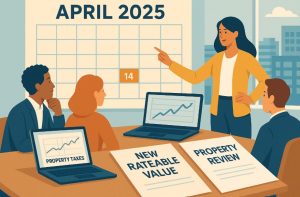
With the 2025 revaluation on the horizon, UK businesses should act early to minimise disruption. The new rateable values will reflect property rental values as of April 2023 and could significantly alter business rate bills from April 2025 onwards.
Steps to Prepare
- Review your property’s current rateable value and compare it with similar properties in the area.
- Keep accurate records of rental agreements, lease changes, and any property modifications.
- Stay informed via the VOA and your local council about upcoming changes or relief schemes.
- Engage a rating surveyor if you believe your rateable value is unfair or likely to rise.
Proactive planning can prevent unwelcome surprises and ensure a smooth transition into the new business rates period.
What Reliefs, Thresholds, and Deadlines Should Businesses Be Aware Of?
| Relief Type | Eligibility Criteria | Discount Offered | Application Deadline |
| Small Business Rates Relief | Rateable value < £15,000 | Up to 100% | Rolling (via local council) |
| Retail, Hospitality, Leisure | Property used for retail/hospitality/leisure | Up to 75% (2024–25) | 30 September 2025 |
| Empty Property Relief | Property vacant for less than 3/6 months | 100% | Automatic (conditions apply) |
| Hardship Relief | Financial hardship proven | Discretionary | Ongoing |
Conclusion: How Can Businesses Stay Ahead of VOA Business Rates?
VOA business rates are an integral part of managing any commercial property in the UK. While they represent a necessary contribution to public services, they can also pose a financial challenge especially for smaller or expanding businesses. By understanding how business rates are assessed, exploring available reliefs, and keeping up to date with revaluations, business owners can make smarter decisions and better allocate resources.
The key is to stay informed, take advantage of relief opportunities, and act quickly when issues arise. With the 2025 revaluation coming soon, now is the time to get ahead of the curve and ensure your business is ready for what’s next.
FAQs
What is the difference between rateable value and business rates?
Rateable value reflects the estimated annual rent a property could command, while business rates are calculated by multiplying that value by the government-set multiplier.
How often does the VOA revalue commercial properties?
As of recent reforms, commercial properties are revalued every three years, with the next cycle taking effect in April 2025.
Can I apply for multiple business rates reliefs?
It depends on the relief types. Some reliefs can be combined, while others cannot. Businesses should consult their local authority to clarify eligibility.
What happens if I don’t pay business rates on time?
Non-payment can lead to legal action, interest charges, and enforcement through the courts or bailiffs, depending on the amount and duration of the arrears.
Are there business rate exemptions for startups?
Startups may not be specifically exempt, but they often qualify for small business rates relief, and some incubators receive favourable terms.
How do I contact the VOA regarding my property?
The VOA can be contacted through their website (gov.uk/contact-voa), where you can check property details, submit challenges, and ask for support.
Does working from home affect VOA business rates?
Not usually. However, if a significant portion of the property is used exclusively for business purposes, it may become liable for business rates.

